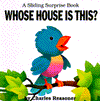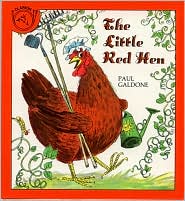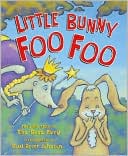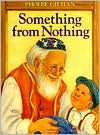Fingerplay: Little Raindrops
This is the sun, high up in the sky. (Form large circle with arms up)
A dark cloud suddenly comes sailing by. (Move hands through the air in a parallel motion.)
These are the raindrops, pitter, pattering down. (Bring arms down, flutter fingers)
Watering the flowers, growing on the ground. (Cup hands to form flowers.)
Activity: Make a book based on this fingerplay. Use the pattern here (Little Raindrops Booklet pattern) to represent the items in the fingerplay. There are four pages for your book (one for each line of the fingerplay). The pattern is a Word document so you can change the size of the objects to save paper, if you wish. The children cut out the pictures. They can cut around them to make it easier. The adults write the words to the fingerplay on each page. For children too young for this craft, the adults make the book FOR their young children. The umbrella can be used on the cover of the book.
Early Literacy Aside--Empower: Making a book with or for your child is very special. By showing care in making them and including your child in the process you make this activity around a book enjoyable. Your child can memorize the words to the rhyme and can "pretend" read it to you. Praise your child. This helps develop print motivation, a child's interest and enjoyment of books and reading. OR Making a book with your child shows them how books work. This helps them with print awareness, how to handle a book, which will get them comfortable with using books as they learn to read. Submitted by Jaime Duval and Whitney Whitaker, Radford (VA) Public Library
 Early Literacy Aside--Example: Print motivation is an interest in and enjoyment of books. Children need this skill prior to formal reading instruction. One way to develop this skill is to use pop-up books and other books that provide surprises. Let's see what surprises this book brings.Read Wide-Mouthed Frog.
Early Literacy Aside--Example: Print motivation is an interest in and enjoyment of books. Children need this skill prior to formal reading instruction. One way to develop this skill is to use pop-up books and other books that provide surprises. Let's see what surprises this book brings.Read Wide-Mouthed Frog.

 Early Literacy Aside--Explain: Talking with your children while reading, encouraging them to make comments and ask questions is one way to share a book that develops your child's understanding of the book. Make reading with your child a postive experience by allowing your child to make comments and ask questions. Try to focus all your attention on your child for that time.During the storytime, demonstrate these techniques with one or more of your books. Point out what you are doing.
Early Literacy Aside--Empower: Talking with your children and giving them time to respond is supervaluable, even in a conversation consisting entirely of baby babble. This helps your children develop conversation skills. Remember that it can take young children from 5 to 12 seconds to process a question and formulate a response, so it's really important to gie them that extra time to express themselves.
Early Literacy Aside--Explain: Talking with your children while reading, encouraging them to make comments and ask questions is one way to share a book that develops your child's understanding of the book. Make reading with your child a postive experience by allowing your child to make comments and ask questions. Try to focus all your attention on your child for that time.During the storytime, demonstrate these techniques with one or more of your books. Point out what you are doing.
Early Literacy Aside--Empower: Talking with your children and giving them time to respond is supervaluable, even in a conversation consisting entirely of baby babble. This helps your children develop conversation skills. Remember that it can take young children from 5 to 12 seconds to process a question and formulate a response, so it's really important to gie them that extra time to express themselves. Early Literacy Aside--Explain: There are many ways we can help children enjoy books as we share books together. Children who have positive experiences around books and reading are more likely to stick with learning to read even when it is difficult. I'll be pointing out some ways to share books to make it enjoyable.
As you read the book have children repeat the phrase, "I do. I'm a . . . " with each animal.
Early Literacy Aside--Example: Having the children participate by guessing the animals and responding when the animal appears helps them enjoy the book. This helps support their print motivation.
Early Literacy Aside--Explain: There are many ways we can help children enjoy books as we share books together. Children who have positive experiences around books and reading are more likely to stick with learning to read even when it is difficult. I'll be pointing out some ways to share books to make it enjoyable.
As you read the book have children repeat the phrase, "I do. I'm a . . . " with each animal.
Early Literacy Aside--Example: Having the children participate by guessing the animals and responding when the animal appears helps them enjoy the book. This helps support their print motivation. Early Literacy Aside--Example: I am going to read one of my favorite children's books. I love reading this book; it is a lot of fun. When reading with your children, choose books YOU enjoy. Your child picks up on your feelings and understands the enjoyment of books and reading. This supports print motivation, a love of books.Read the book Pete's a Pizza by William Steig putting motions to the words.
Early Literacy Aside--Example: I am going to read one of my favorite children's books. I love reading this book; it is a lot of fun. When reading with your children, choose books YOU enjoy. Your child picks up on your feelings and understands the enjoyment of books and reading. This supports print motivation, a love of books.Read the book Pete's a Pizza by William Steig putting motions to the words.

 Book Introduction: In this book Let's Go Froggy by Jonathan London, there is a repeated phrase, "flop, flop, flop" when his mother calls to froggy. Let's hear you say, "flop, flop, flop." You'll say it each time Froggy's mother calls him.Read the book.
Early Literacy Aside--Example: Having your child say a repeated phrase with you throughout the entire book keeps him/her involved. This is one way you support print motivation, an enjoyment of books.
Book Introduction: In this book Let's Go Froggy by Jonathan London, there is a repeated phrase, "flop, flop, flop" when his mother calls to froggy. Let's hear you say, "flop, flop, flop." You'll say it each time Froggy's mother calls him.Read the book.
Early Literacy Aside--Example: Having your child say a repeated phrase with you throughout the entire book keeps him/her involved. This is one way you support print motivation, an enjoyment of books. Book Introduction: Our next book is a songbook called Little Bunny Foo Foo by Paul Johnson. Let's sing it together.Early Literacy Aside--Example: You may want to share this songbook with your child at home and point out some of the phrases. You child will like to sing the refrain with you! By making the sharing of books enjoyable, you are supporting print motivation. Your child will want to learn to read.
Book Introduction: Our next book is a songbook called Little Bunny Foo Foo by Paul Johnson. Let's sing it together.Early Literacy Aside--Example: You may want to share this songbook with your child at home and point out some of the phrases. You child will like to sing the refrain with you! By making the sharing of books enjoyable, you are supporting print motivation. Your child will want to learn to read.